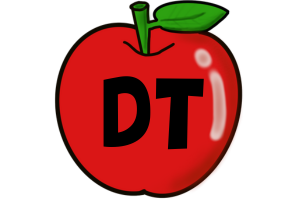Setting goals is an important tool to measure your progress, monitor your personal growth and give yourself perspective. Goals are an integral part of a teacher’s professional development and should be stated in terms of student outcomes. They ought to record changes within student performances and the effectiveness of certain learning strategies and transformations.

A SMART goal is a strategy used by several professionals to guide goal setting and give them direction. They involve creating instructional-based learning objectives for areas that require improvement. SMART is an acronym that stands for:
S – Specific
M – Measurable
A – Attainable
R – Realistic
T – Time-bound
Specific
Specific goals tend to have a higher chance of completion. They are more focused and understand what is involved or what to expect for the outcome. Questions like, Who is your audience for the goal, What do you want to accomplish with it, Where and When will you achieve it and Why do you want to achieve this specific goal? Can help with being more focused in your approach.
If you take note of these questions, you’re likely to end up with a super specific goal that has a great percentage of being accomplished.
For example, your goal can be helping students learn music but more specifically to identify and apply music symbols, terms, and definition.
Measurable
You have to set a criteria to measure your goal. Having a criteria means you will be able to carefully think about your progress, whether you’re close to reaching your goals and if you aren’t what are the contingency plans in place for it.
Ask questions like how much have you been able to achieve, how long do you think it is taking you to reach your goal or how to know if you’ve reached your goal. Moreover, it is smart to set up an indicator of your progress.
For example, develop a post and pre performance assessment that demonstrates their progress within the music class.
Attainable
When you’re designing a SMART plan, remember to keep yourself grounded while doing so. The goals you decide on must be attainable and achievable. It helps you understand the goal better and direct your effort towards it.
This part of SMART goals challenges your intellectual capacity by giving leeway to stretch out your goal, but this growth should not become vague or overwhelming so much so that you cannot achieve it.
Before you make any decisions ask if you have the resources to achieve the goal. Are your capabilities up to par with it? Is there something you can add which would help you achieve this?
Look for examples of other people being able to achieve these goals, especially if you’re setting yourself up for a challenge, it is important to see real life examples of it.
Realistic
Although similar to Attainable, this part asks whether the goal you’ve set is within reach. Are the available resources and time enough for the goal? Will you be able to commit to this goal and see it through to fruition.
When deciding a goal, you have to assess your surroundings and yourself. How are they going to affect your goal? What are some risk management tools you want to apply to these in-case something does not go according to plan?
For example, if the students learning music are unable to practice because of medical reasons, as it is a class that requires mental and physical labor how will they complete the course? What are some ways you will ensure that they are learning adequately?
Time-Bound
Goals must be time-bound, if they don’t have a starting and ending date you’re likely to extend them and give yourself more time and it is going to become mismanaged. Time should align with your SMART goal and the learning outcomes because you might miss out on important topics you had to discuss with your students.
It also adds to your motivation when you’re trying to achieve a goal. Give yourself a deadline and make it specific to each lesson plan. Why and when do you want to achieve this goal in this timeline?
Improving Student Engagement
One SMART goal example for teachers aiming to boost student engagement could be: “By the end of the semester, I will increase student participation in class discussions by 50% compared to the baseline data collected at the start of the semester.” This goal is Specific, as it targets student engagement, Measurable, in the percentage increase, Attainable, as it’s within the teacher’s influence, Relevant, because class participation often leads to better understanding, and Time-bound, as it sets the end of the semester as the deadline.
Enhancing Curriculum with Technology
A teacher looking to modernize their teaching methods might consider the following SMART goal: “Over the next 12 weeks, I will incorporate at least two new forms of technology into my lesson plans each week, aiming for a minimum of 80% of students to report a positive impact on their learning experience as assessed by end-of-term surveys.” This goal is Specific (incorporating technology), Measurable (two new forms of technology each week and the percentage of positive student feedback), Achievable (a realistic target given the time frame), Relevant (technology can often enhance the learning experience), and Time-bound (over the next 12 weeks).
Improving Professional Development
For teachers interested in their own professional development, a suitable SMART goal might be: “By the end of the academic year, I will complete at least three professional development courses related to differentiated instruction to improve my skills and increase the pass rate of my students by 10%.” This goal is Specific (complete professional development courses), Measurable (completion of three courses and a 10% increase in pass rate), Achievable (attending three courses is feasible within an academic year), Relevant (it targets professional growth and student success), and Time-bound (to be achieved by the end of the academic year).
Why is SMART important for teachers?
For an educator looking to adopt a habit of continual reflection on their progress, improvement of their instructional skills and keep adding room for growth, SMART strategy is what gives them the focus they require.
With how the world is now changing educators have had perhaps the most difficult time having to reshape courses and classes. Every aspect of the education system has gone virtual. Now more than ever, it is important for teachers to apply SMART goals strategy to keep track of their progress and incorporate the latest methodologies and software.
The best time to use SMART goals is either at the start of the school year or the start of the term. This will help you target your goals with clear deadlines, and have some sort of accountability throughout the term. We would even suggest going through your lesson plans a week before they are executed.
Here are some SMART goal examples for teachers to help them get a head start in their planning for the upcoming semester or school year. These will help you have a more productive, learning-intensive and interesting school year as it will also allow room for you to be more creative with your design activity in class.
The following SMART goals can help you make your semester manageable and your goals achievable. Consider your own timeline as you look at them and design it based on your own needs.
Parent-student communication
It is important to introduce parents and students to each other. They get to know about how the students are faring in classes, what the environment is like and how are the learning outcomes being achieved.
Usually parents are called over to the school when they hear complaints about their child, this creates a negative experience which makes parents hesitate to approach teachers about their child’s progress. Try to initiate a conversation with at least once a month.
Invite them over for any community engagement activity you might be preparing for. Start small activities like career day or weekly story reading they can participate in. leave your door open for direct communication. Let them know that they can reach out to you.
Plan your semester in a way that you can space out activities that require parent engagement and don’t overburden you. Always remember that a good parent-student relationship will make communication and getting to know their children better.
Positive Email Correspondence with Parents
While you’re engaging parents in activities, most parents complain about not being reached out when their child achieves something. They hardly hear from their teachers unless the student needs extra attention.
Create a plan according to your timeline, where you contact at least 25% of parents from the class each month, based on the number of students. Update them with the progress they are making and give positive feedback about their child.
Virtual Field Trips
As we start the new term, most of us are aware of the pandemic and how it will affect our correspondence with students. This makes it even more important to be Tec savvy and think out of the box. Field trips are not possible at the moment, so take advantage of visual learning.
A lot of museums, art galleries, planetariums have their virtual tours up and online. If they aren’t available, get the school to fund them as they’re probably going to be a fraction of what they would have cost in person.
Engage with the student after it and see how what they have learned. Space out these trips in a manner that your student does not get distracted from the course. As we shift to virtual learning, it has become increasingly difficult for students to retain their attention for longer periods of time.
Sign up For Courses
As an educator, you should always be open to learning new strategies for teaching. Especially the time we are in, it becomes important to stay up to date and know what is on-trend. Prep yourself by enrolling in some teaching advancement courses that can enhance your skills.
Ask the school to sponsor these for your learning as it is important that they also see and acknowledge the effort you are putting in to grow. You can find several advancement courses online from sites like Scholastic, Advancement Courses and so on.
These courses target issues like lack of motivation in students, creating engaging environments for students, how you can become classroom tech savvy etc.
Should You Do This?
Absolutely! As someone who teaches and helps students grow, a teacher understands the importance of their personal growth. Although SMART goals seem to be student targeted, a student’s response is also largely dependent on the attitude and promptness of the teacher. Thus, it is important that SMART goals affect the professional development of teachers as well.

